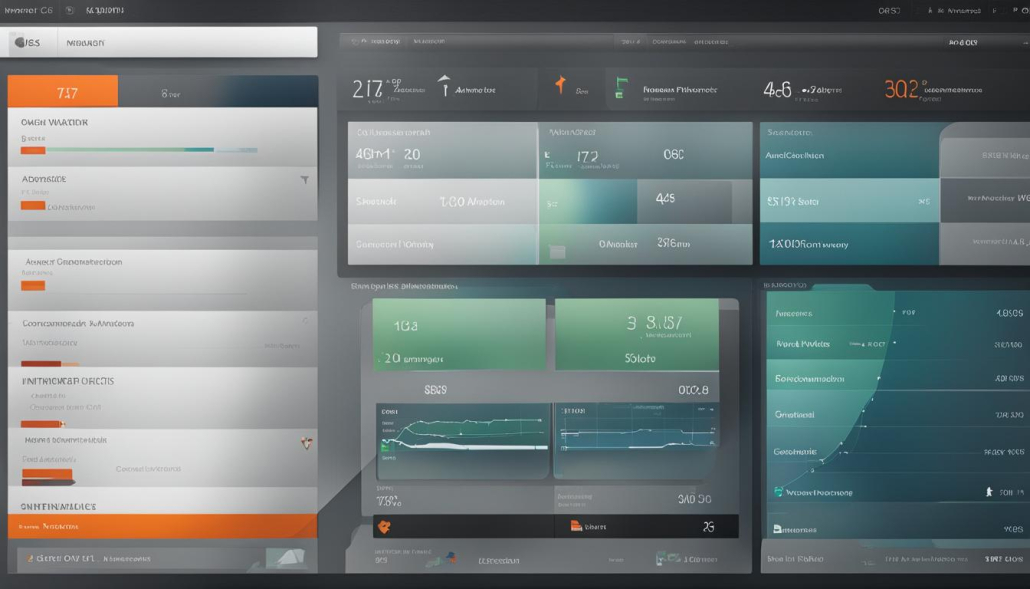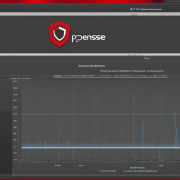OpnSense vs pfSense: Unveiling the Best Firewall Solution
In today’s digital landscape, network security is of utmost importance. With cyber threats on the rise, having a reliable firewall solution is crucial to protect your network from intrusions. Two popular open-source firewall solutions, OpnSense and pfSense, offer a range of features to enhance network security. In this article, we will compare OpnSense and pfSense to determine which one is the best choice for your firewall needs.
Key Takeaways:
- OpnSense and pfSense are open-source firewall solutions that provide advanced features for network security.
- OpnSense focuses on security and user-friendliness, while pfSense offers flexibility and a wide range of plugins.
- Both solutions can provide robust firewall protection and enhance network security.
- The choice between OpnSense and pfSense depends on specific requirements and preferences.
- Consider factors like performance, features, and ease of use when deciding on the best firewall solution.
Understanding Firewalls and Their Importance
Firewalls are an indispensable component of network security systems, playing a crucial role in protecting organizations from various cyber threats. By monitoring and controlling network traffic, firewalls act as a barrier between internal and external networks, preventing unauthorized access and intrusions.
One of the primary functions of a firewall is to analyze incoming and outgoing network traffic and enforce security policies based on predefined rules. This helps in identifying and blocking potential threats, such as malware, viruses, and unauthorized access attempts. Firewalls also play a vital role in preventing Distributed Denial of Service (DDoS) attacks, which can overwhelm a network with an excessive amount of traffic, rendering it inaccessible to legitimate users.
Cracking, eavesdropping, and data interception are common cyber threats that firewalls mitigate. By inspecting network packets, firewalls can detect and block suspicious activities, ensuring the confidentiality and integrity of sensitive data. Firewalls also help in enforcing network segmentation, limiting the spread of malware and reducing the impact of potential security breaches.
Overall, firewalls are essential components of network security infrastructure, protecting organizations from a wide range of cyber threats. They provide a necessary layer of defense by monitoring and controlling network traffic, preventing unauthorized access, and mitigating various types of attacks. OpnSense and pfSense, as open-source firewall solutions, offer advanced features and capabilities to enhance network security and protect organizations’ digital assets.
What Is OpnSense?
OpnSense is an open-source firewall and routing platform based on FreeBSD. It was created as a fork of pfSense and offers advanced security features and user-friendly management interfaces. OpnSense aims to provide a secure and easy-to-use firewall solution for a wide range of network environments. It offers features such as IPsec, OpenVPN, and WireGuard protocols, web and content filtering, and intrusion detection and prevention systems (IDS/IPS).
OpnSense’s foundation on FreeBSD ensures stability and scalability, making it suitable for both small and large networks. It provides a robust security framework with multiple layers of protection, including stateful packet filtering and network address translation (NAT). OpnSense’s web-based interface simplifies the configuration process, allowing administrators to easily manage firewall rules, create VPN connections, and monitor network traffic.
OpnSense is a powerful open-source firewall solution that combines security, routing, and user-friendly management interfaces. Its advanced security features and intuitive interface make it an ideal choice for network administrators seeking a reliable and easy-to-use firewall solution.
OpnSense’s development is driven by a dedicated community of developers and enthusiasts who continuously contribute to its improvement. Regular updates and bug fixes ensure that OpnSense remains up-to-date and secure. The community also provides comprehensive documentation and user support, making it easier for users to configure and optimize OpnSense for their specific network requirements.
| OpnSense Features | Description |
|---|---|
| IPsec, OpenVPN, and WireGuard protocols | OpnSense supports multiple VPN protocols for secure remote access and site-to-site connectivity. |
| Web and content filtering | OpnSense allows administrators to control and monitor web access, blocking unwanted content and improving network security. |
| Intrusion detection and prevention systems (IDS/IPS) | OpnSense includes powerful IDS/IPS capabilities to detect and prevent network intrusions. |
Please accept YouTube cookies to play this video. By accepting you will be accessing content from YouTube, a service provided by an external third party.
If you accept this notice, your choice will be saved and the page will refresh.
OpnSense’s extensive feature set, combined with its open-source nature, makes it a viable alternative to proprietary firewall solutions. Its focus on security, routing capabilities, and user-friendly interface positions OpnSense as a reliable choice for organizations looking to enhance their network security.
What Is pfSense?
pfSense is an open-source firewall and router platform based on FreeBSD. It was initially released in 2004 and has since become a popular choice for network security. pfSense is known for its flexibility and user-friendliness, offering features such as IPsec, OpenVPN, and WireGuard protocols, as well as web and content filtering, and intrusion detection and prevention systems (IDS/IPS). It provides a web-based interface for easy management and supports both physical and virtual installations.
Key Features of pfSense:
- Flexibility: pfSense offers a wide range of features and can be customized to meet specific network security requirements.
- Routing Capabilities: It provides advanced routing and NAT capabilities, allowing for efficient traffic management.
- High Availability: pfSense supports high availability configurations, ensuring uninterrupted network connectivity.
- Web Filtering: It offers web filtering capabilities to restrict access to certain websites or types of content.
- Port Forwarding: pfSense allows for easy configuration of port forwarding rules, enabling remote access to specific services.
Overall, pfSense is a robust open-source firewall solution that offers flexibility and a wide range of features for network security. Its intuitive web-based interface and extensive community support make it a popular choice for both small and large networks.
| Feature | pfSense |
|---|---|
| Flexibility | High |
| Routing Capabilities | Advanced |
| High Availability | Supported |
| Web Filtering | Supported |
| Port Forwarding | Easy configuration |
“pfSense is a flexible and user-friendly open-source firewall and router platform based on FreeBSD. With its advanced routing capabilities, high availability support, and web filtering features, pfSense provides a comprehensive solution for network security. Whether you’re setting up a small home network or managing a large enterprise environment, pfSense offers the flexibility and functionality you need.”
Development and Community
OpnSense and pfSense both have thriving open-source communities that contribute to their development and improvement. These communities play a vital role in supporting users, providing bug fixes, and introducing new features. While pfSense has a longer history and a larger user base, OpnSense offers a more stringent development approach and regular release cycles.
The development of OpnSense started in 2014 as a fork of pfSense, with a focus on security and user-friendliness. Since then, it has gained popularity among users who value its robust security features and intuitive management interfaces. The development team behind OpnSense follows a strict release schedule, ensuring that users have access to the latest updates and improvements.
Similarly, pfSense has a dedicated community that has contributed to its growth over the years. With a larger user base, pfSense benefits from a wider range of feedback and testing. The community-driven development model ensures that pfSense remains a feature-rich and reliable firewall solution.
Table: Comparison of Development and Community
| OpnSense | pfSense | |
|---|---|---|
| Development Approach | Strict release cycles with a focus on security and user-friendliness | User-driven development with a wide range of feedback and testing |
| Development History | Started in 2014 as a fork of pfSense | Released in 2004 |
| Community Size | Growing community with dedicated contributors | Larger user base with extensive community support |
| Support and Updates | Regular release cycles and active user support | Active community support and regular updates |
Ultimately, both OpnSense and pfSense benefit from their vibrant open-source communities and dedicated development teams. The choice between the two largely depends on individual requirements and preferences regarding the development approach, community support, and release cycles.
User Interface Comparison
When it comes to managing firewall settings, both OpnSense and pfSense offer user-friendly graphical user interfaces (GUI) that simplify the configuration process. However, there are some differences in terms of design and usability.
OpnSense User Interface:
The OpnSense GUI stands out for its modern and user-centric design. It features an intuitive navigation system that allows users to easily access and modify firewall settings. The interface is visually appealing and customizable, giving users the ability to personalize their experience according to their preferences. OpnSense focuses on usability and security, providing a GUI that is both aesthetically pleasing and functional. The user-centric design of the OpnSense interface ensures that users can quickly and efficiently manage their firewall configurations.
pfSense User Interface:
The pfSense GUI also offers a user-friendly experience, although it may not be as visually appealing or flexible as OpnSense’s interface. The pfSense interface is straightforward and easy to navigate, providing administrators with the necessary tools to configure firewall settings effectively. While it may not have the same level of customization options as OpnSense, pfSense’s GUI still delivers a reliable and user-friendly experience for managing firewall configurations.
Both OpnSense and pfSense provide intuitive graphical user interfaces that simplify the firewall management process. OpnSense’s GUI offers a more modern and user-centric design, while pfSense’s GUI provides a straightforward and functional interface.
Package Management Comparison
One important aspect to consider when choosing a firewall solution is the package management system it offers. Both OpnSense and pfSense provide extensive package management capabilities that allow users to customize their firewall deployments with a wide range of plugins and extensions.
While pfSense has a larger collection of available plugins, providing greater configuration flexibility, OpnSense takes a more selective approach, focusing on security and usability. Although OpnSense may not have as many packages as pfSense, its package management system is well-documented and intuitive, making it easier for users to navigate and choose the right plugins for their specific needs.
To illustrate the differences, we have created a table that compares the package management systems of OpnSense and pfSense:
| Firewall Solution | Package Management System | Number of Available Plugins | Focus |
|---|---|---|---|
| OpnSense | Well-documented and intuitive | Less extensive than pfSense | Security and usability |
| pfSense | Extensive | Large collection of plugins and add-ons | Configuration flexibility |
As shown in the table, OpnSense prioritizes security and usability, offering a curated selection of plugins that have undergone thorough testing and meet strict security standards. On the other hand, pfSense provides a wider range of plugins and extensions, giving users more options for customizing their firewall configurations.
Licensing Differences
OpnSense and pfSense are both open-source firewall solutions that operate under different licensing approaches. Understanding the licensing differences between the two can help you make an informed choice for your network security needs.
pfSense is licensed under the Apache 2.0 license, which is a widely-used open-source license. This means that you have the freedom to use, modify, and distribute the software freely. However, it’s important to note that pfSense has recently introduced a closed-source version called pfSense Plus, which comes with additional features and support, but requires a subscription.
On the other hand, OpnSense uses the 2-clause BSD license, which is also an open-source license that allows for modification and distribution. OpnSense is committed to maintaining an open and honest approach to software distribution, ensuring that the core firewall functionality remains freely available to everyone.
When it comes to licensing, both OpnSense and pfSense provide users with the freedom to customize and adapt the software according to their specific needs. However, if you prefer a purely open-source solution without any closed-source alternatives, OpnSense may be the better choice for you.
Table: Licensing Differences
| Firewall Solution | Licensing | Additional Considerations |
|---|---|---|
| OpnSense | 2-clause BSD license | A fully open-source solution |
| pfSense | Apache 2.0 license | Offers a closed-source version (pfSense Plus) with additional features and support |
Feature Comparison
OpnSense and pfSense are both powerful open-source firewall solutions that offer a wide range of features to enhance network security and routing capabilities. Understanding the features provided by each solution is crucial for making an informed decision about which one best suits your needs. In this section, we will compare the key features of OpnSense and pfSense to help you evaluate their capabilities and determine the most suitable option for your network security requirements.
Network Security
Both OpnSense and pfSense prioritize network security and provide robust features to safeguard your network from various threats. OpnSense offers advanced Intrusion Detection and Prevention Systems (IDS/IPS) that continuously monitor network traffic for suspicious activities and potential attacks. It also includes powerful web and content filtering capabilities, allowing you to control and restrict access to specific websites or content categories. On the other hand, pfSense offers high availability features and supports advanced routing and Network Address Translation (NAT), enabling secure and efficient network communication.
Routing and VPN
OpnSense offers excellent routing capabilities, allowing you to create and manage complex network setups with ease. It supports various routing protocols, including dynamic routing using OSPF and BGP. OpnSense also includes WireGuard VPN, which provides fast, secure, and scalable virtual private network connections. In contrast, pfSense excels in providing a robust VPN solution with support for multiple protocols, such as IPsec, OpenVPN, and WireGuard. It offers extensive VPN configurations and allows for secure remote access to your network.
| OpnSense | pfSense | |
|---|---|---|
| Network Security | Advanced IDS/IPS Web and content filtering |
High availability Advanced routing and NAT |
| Routing | Dynamic routing (OSPF, BGP) WireGuard VPN |
Multiple VPN protocols Extensive VPN configurations |
| Additional Features | Guest access User-centric interface |
Port forwarding Web filtering |
Additional Features
In addition to network security and routing capabilities, both OpnSense and pfSense offer various features to enhance your firewall solution. OpnSense focuses on providing a user-centric interface, making the management and configuration of your firewall easy and intuitive. It also offers guest access features, allowing you to create separate network segments for guest users. On the other hand, pfSense provides port forwarding capabilities, enabling you to redirect incoming network traffic from specific ports to internal servers. It also includes web filtering features to control access to websites based on content categories or specific URLs.
By comparing these key features, you can gain a better understanding of the strengths and capabilities of OpnSense and pfSense. Consider your network security requirements, routing needs, and additional features to determine which firewall solution aligns best with your specific needs.
Setting Up an Optimal Firewall with OPNsense or pfSense
Setting up an optimal firewall with OPNsense or pfSense involves a series of steps to ensure network security and protect against potential threats. The initial configuration process is crucial for establishing a solid foundation. Administrators need to configure the basic settings, including network interfaces, IP addresses, and DNS servers, to ensure proper connectivity. Both firewall solutions offer user-friendly web interfaces that guide users through the setup process, making it easy to define network settings and establish initial connectivity. These interfaces provide intuitive menus and options, allowing administrators to easily navigate and customize the firewall configuration to meet their specific requirements.
Once the initial configuration is complete, the next step is to create firewall rules. Firewall rules act as the gatekeepers of network traffic, allowing or blocking specific connections based on defined criteria. OPNsense and pfSense offer comprehensive firewall rule management interfaces, making it simple to create and manage rules. Administrators can use various parameters such as source and destination IP addresses, port numbers, and protocol types to define firewall rules. It is important to create rules that strike a balance between network security and operational needs, ensuring that legitimate traffic can flow while unauthorized access attempts are blocked.
In addition to the initial configuration and firewall rules, enhancing network security is essential to maximize protection. Both OPNsense and pfSense offer additional security features such as Intrusion Detection and Prevention Systems (IDS/IPS). These systems monitor network traffic and detect potential threats, alerting administrators to suspicious activities or attempted intrusions. By enabling IDS/IPS, administrators can enhance the effectiveness of their firewalls and proactively defend against various cyber threats. Regularly monitoring firewall logs is also crucial to identify and investigate any security incidents or abnormal network activities. By proactively managing and analyzing firewall logs, administrators can detect and respond to potential threats in a timely manner, ensuring a secure network environment.
Establishing an optimal firewall with OPNsense or pfSense requires careful configuration, rule management, and network security enhancements. By following best practices and utilizing the features provided by these open-source firewall solutions, administrators can create a robust defense against cyber threats. The continuous improvement and development of both OPNsense and pfSense ensure that administrators have access to the latest security features and technologies, further strengthening network security.
Conclusion
After comparing OpnSense and pfSense, two powerful open-source firewall solutions, it is evident that both offer advanced features and capabilities to enhance network security. The choice between them ultimately depends on specific requirements and preferences.
OpnSense focuses on security and user-friendliness, offering a modern and intuitive user interface, along with features like IPsec, OpenVPN, and WireGuard protocols, web and content filtering, and IDS/IPS. On the other hand, pfSense provides flexibility, with a larger collection of plugins and extensions, advanced routing capabilities, high availability, web filtering, and port forwarding.
Regardless of the choice, both OpnSense and pfSense can provide robust firewall protection, ensuring a safe digital environment. It is important to evaluate individual needs and objectives to determine the best firewall solution for network security.
FAQ
What is the difference between OpnSense and pfSense?
OpnSense and pfSense are both open-source firewall solutions, but they have different focuses and features. OpnSense emphasizes security and user-friendliness, while pfSense offers flexibility and a wide range of plugins. The choice between them depends on individual requirements and preferences.
Which firewall solution is more user-friendly?
Both OpnSense and pfSense offer user-friendly graphical user interfaces (GUI) for managing firewall settings. OpnSense has a more modern and user-centric interface, while pfSense’s GUI is also user-friendly but may not be as visually appealing or flexible.
Do OpnSense and pfSense support plugin and extension management?
Yes, both OpnSense and pfSense offer extensive package management systems that allow users to customize their firewall deployments with plugins and extensions. pfSense has a larger collection of plugins, while OpnSense focuses on security and usability, being more selective about the plugins it includes.
What are the licensing differences between OpnSense and pfSense?
OpnSense is licensed under the 2-clause BSD license, while pfSense is licensed under the Apache 2.0 license. Both licenses are open-source and allow users to modify and distribute the software freely. However, pfSense has introduced a closed-source version called pfSense Plus.
What features do OpnSense and pfSense offer?
OpnSense and pfSense offer a wide range of features to enhance network security and routing capabilities. OpnSense excels in areas such as guest access, WireGuard VPN, and content filtering. PfSense provides advanced routing and NAT capabilities, high availability, web filtering, and port forwarding.
How should I set up a firewall with OpnSense or pfSense?
Setting up an optimal firewall with OpnSense or pfSense involves steps such as initial configuration, firewall rule creation, and network security enhancements. Both solutions offer intuitive web interfaces for easy management and configuration. Following best practices and regularly updating the firewall software ensures a secure network environment.
- About the Author
- Latest Posts
Mark is a senior IT technician at Biteno.com . He writes about Linux, Windows and Software.




